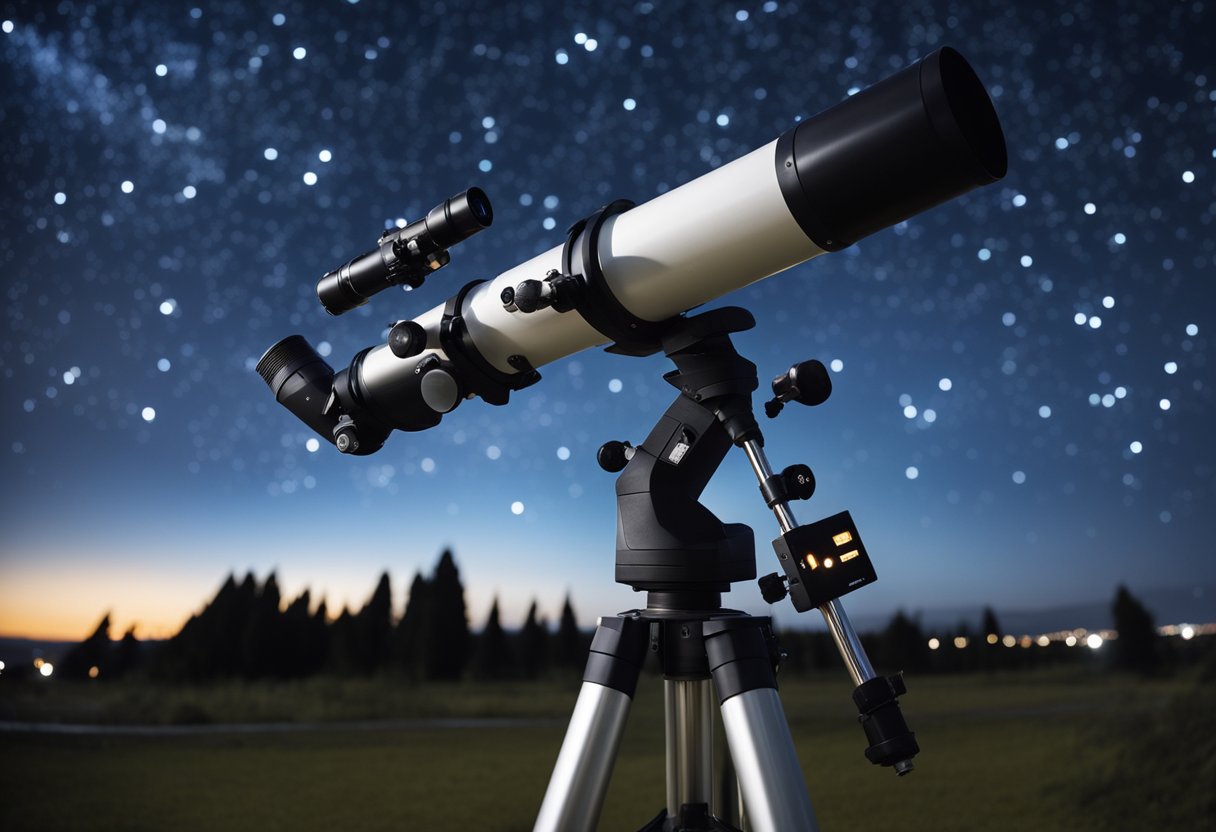
Cosmic Event Tracking – As we observe the vast reaches of space, the tracking of cosmic events becomes a pivotal element in our understanding of the universe. These events, ranging from meteor showers to the violent outbursts of supernovae, provide crucial insights into the life cycle of astrophysical bodies and the dynamic processes governing the cosmos. Our ability to monitor these occurrences not only enriches fundamental astronomical knowledge but also plays a significant role in assessing their potential impact on Earth’s environment.
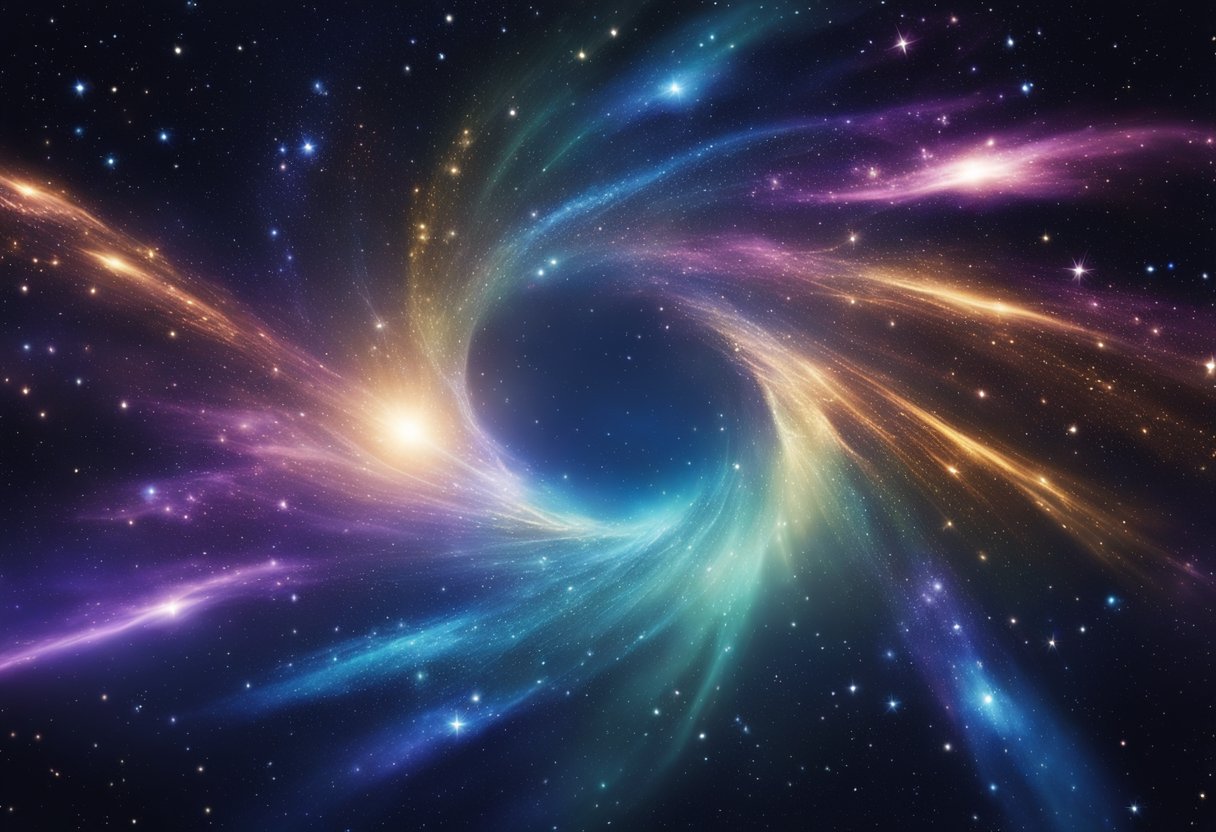
In recent years, our endeavours in space technology have greatly advanced the methods we use to navigate and track these cosmic phenomena. These technological developments have led to more sophisticated cosmic event tracking systems, which are integral to our efforts in both research and ensuring safety from potential risks posed by near-Earth objects. Through these systems, we meticulously record cosmic cycles and patterns, enhancing public engagement and education, while also bolstering our capabilities in preparing for human activities beyond our planet.
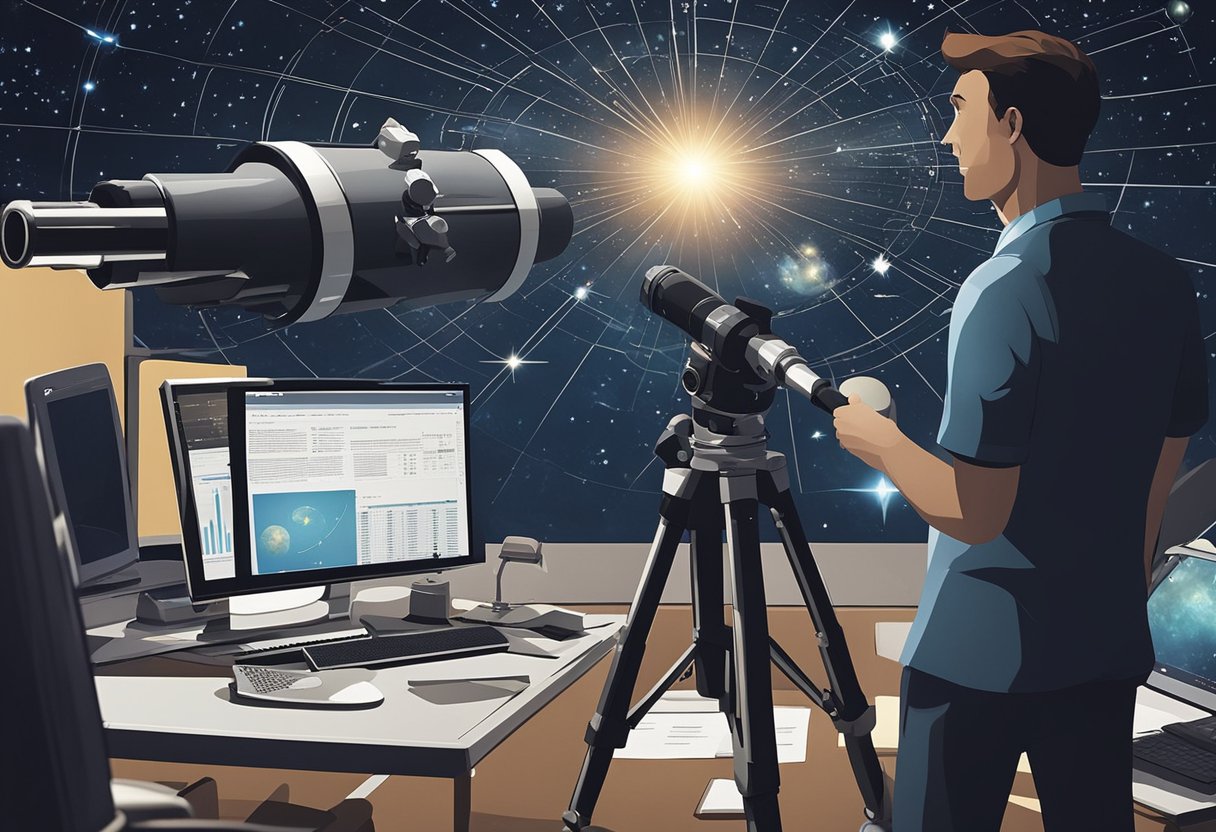
In our pursuit to understand the universe, we must begin by studying the particles that traverse the vast expanse of space. We’ll explore the two fundamental aspects: cosmic rays, which are high-energy particles reaching Earth, and the dynamics within our Solar System that influence the trajectory and characteristics of these particles.
Cosmic rays are highly energetic particles originating from outer space. They constantly bombard the Earth and are composed mainly of protons and high-energy nuclei. Upon entering the Earth’s atmosphere, cosmic rays can lead to cascading events known as air showers, producing a spectrum of secondary particles. Studying cosmic rays provides us with crucial information about the conditions and events in space beyond our Solar System.
The dynamics of our Solar System can have a profound effect on the detection and analysis of cosmic rays. Understanding the movement and alignment of planetary bodies helps us better predict the impact of solar phenomena like solar flares on cosmic ray patterns. As we track these events, we must account for the gravitational forces at play between the Earth and other celestial bodies, which can alter the paths of cosmic rays, contributing to the complex task of cosmic event tracking.
Monitoring these intricate phenomena can also be an important consideration for ventures like SpaceVoyageVentures.com, which aims to chart the nascent field of space tourism, ensuring that future travellers are informed of cosmic conditions as part of their journey.
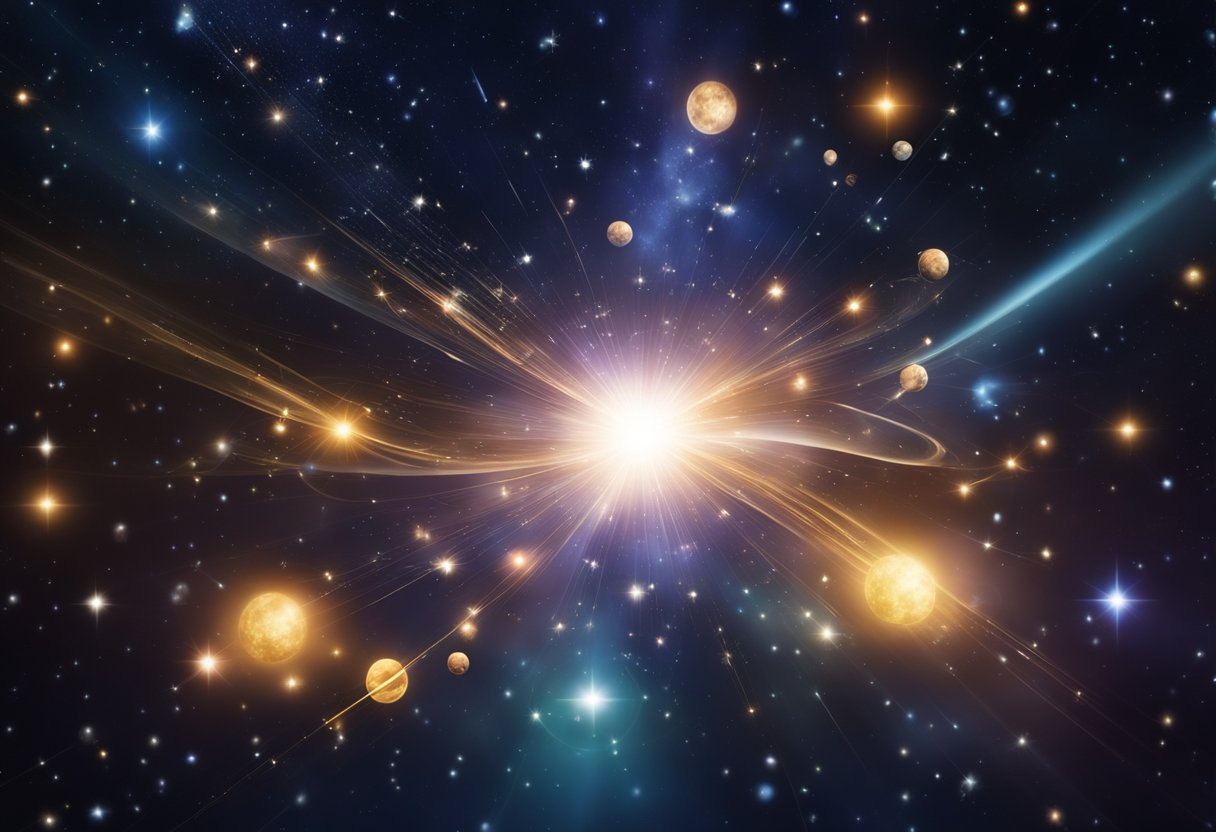
In our exploration of the universe, we attentively study astrophysical bodies such as black holes, witness the explosive events of supernovae, and closely monitor asteroids. These celestial entities are not only fascinating but also critical in understanding the cosmos.
We recognise black holes as regions of spacetime exhibiting gravitational acceleration so strong that nothing can escape from it, not even light. These intriguing objects can be detected by their interaction with other matter and their influence on nearby stars and gas. By observing the motion of these stars and gas clouds, we learn about the black hole’s properties, like its mass and spin.
A supernova represents the final evolutionary stages of a massive star’s life cycle and is characterised by an immense explosion. We observe these phenomena to understand the creation of chemical elements and the distribution of matter in the universe. Supernovae can outshine entire galaxies and transiently radiate more energy than our sun will in its entire lifetime.
Our team is committed to the monitoring of asteroids, tracking their orbits to ascertain potential threats to Earth and opportunities for scientific study. We utilise telescopes and space-based platforms to detect and trace their paths. The careful study of asteroids provides insights into the early solar system, as these space rocks are remnants from that era.
We must consider how cosmic events affect Earth’s environment, especially regarding our planet’s magnetic fields and the overarching influence on climate patterns.
When analysing the connection between cosmic events and Earth’s magnetic fields, we find that solar flares and coronal mass ejections can cause significant disturbances. These solar activities send charged particles towards Earth, which can interact with our magnetic fields, sometimes leading to fluctuations that can result in geomagnetic storms.
Concerning the influence on Earth’s climate, it’s known that cosmic rays may play a part in cloud formation. These high-energy particles, which incessantly bombard our planet, have the potential to initiate cloud nucleation by creating aerosols, which could subsequently impact Earth’s climate. While direct links to climate change remain a subject of ongoing research, the relationships between cosmic events, cloud cover, and temperature variations are intricate parts of our biosphere’s interactions.
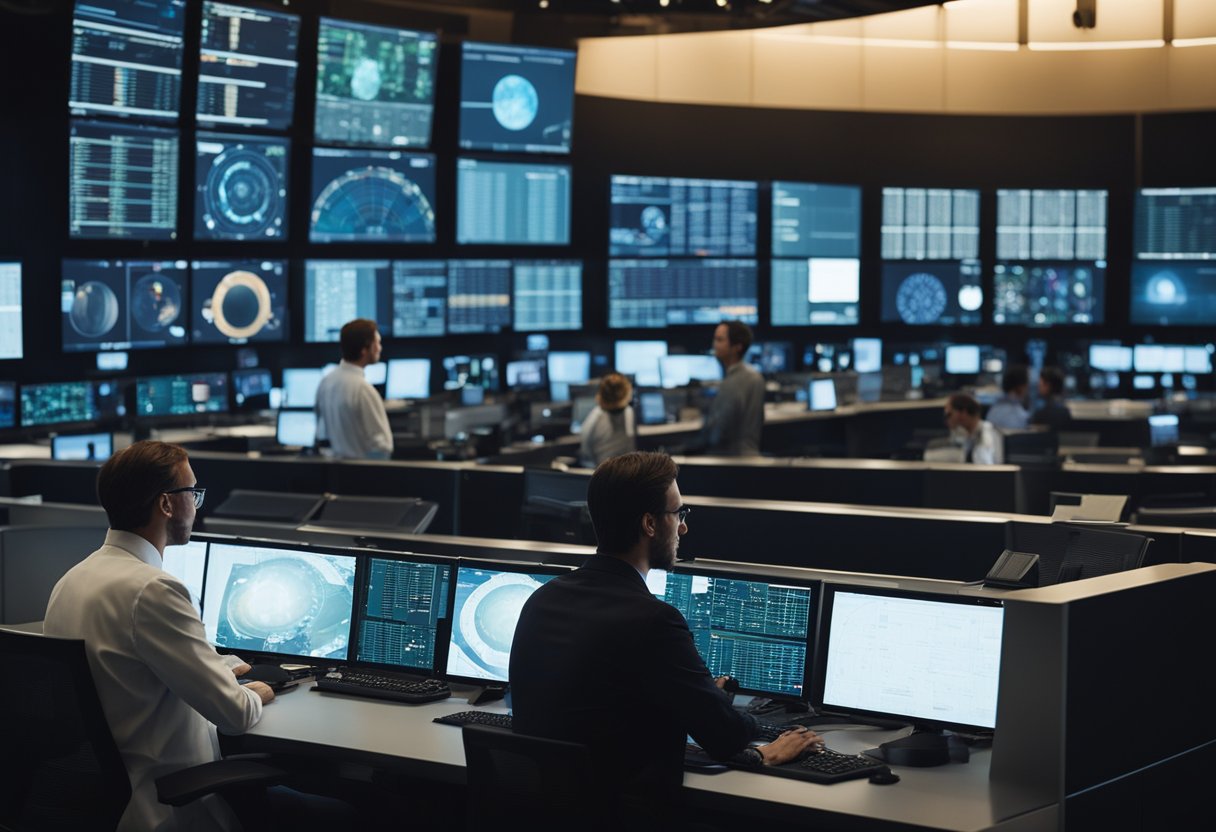
In our pursuit of understanding the cosmos, we’ve made remarkable progress through missions and technologies centred around observation and research.
NASA has been instrumental in expanding our comprehension of the universe. Our endeavours in space through this agency have included detailed studies of cosmic phenomena and support in developing a basis for future human exploration. Via NASA’s contributions, studies in the Galactic Cosmic Rays have underscored the challenges in protecting astronauts from space radiation, pivotal for prolonged lunar missions.
The employment of satellite technology has revolutionised our observational capabilities. These orbiting instruments serve as our eyes, relaying unprecedented data on cosmic events back to Earth. Currently, our satellites are capturing vast amounts of data facilitating the understanding of our own planet, solar system, and the expansive universe that lies beyond.
As we enrich our collaborative efforts, our horizons expand. SpaceVoyageVentures.com offers insight into the dawn of space tourism, giving us a glimpse into the public’s potential engagement with space in the near future through tourism. This signifies a shift from observation to interaction, providing a platform for broader human connection with space.
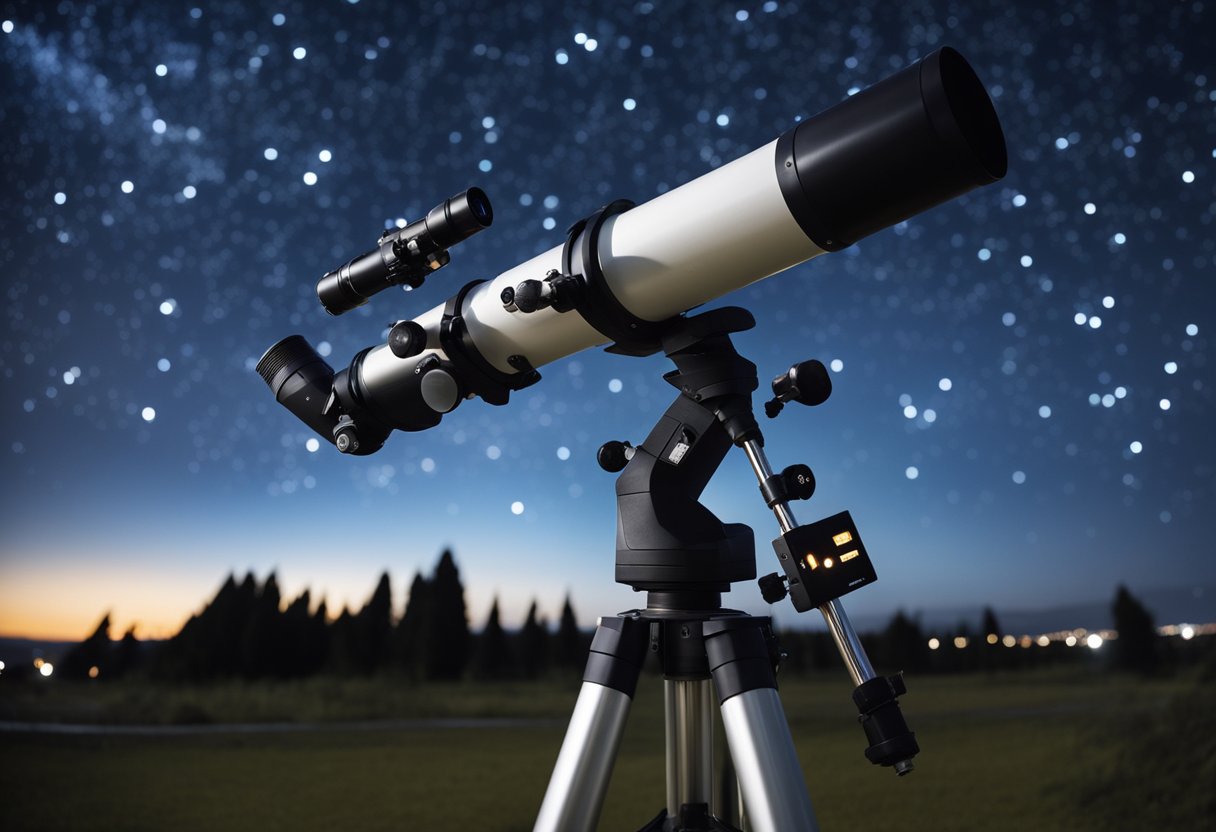
In our quest to understand the cosmos, we’ve witnessed remarkable leaps in technological capabilities. These strides have bolstered our ability to track cosmic events with unprecedented precision and breadth.
Recent innovations in telescopes and detectors have expanded our observational capabilities across a broad energy range. We’ve seen the advent of cosmic time synchronisation technology, which uses cosmic rays to synchronise devices on Earth. By detecting ultrahigh-energy cosmic ray strikes, which occur with enough frequency to provide real-time synchronisation, we enhance our observational accuracy even in remote areas.
Furthermore, advancements in detector technology allow us to track near-Earth cosmic explosions, harnessing techniques such as accelerator mass spectrometry. These developments enable us to study cosmic phenomena like supernovae and black holes not just in space, but also in earthbound laboratories, thereby widening the scope of our enquiry.
Our systems have evolved to handle an ever-increasing influx of data. We now employ sophisticated data management frameworks to store, process, and analyse the voluminous datasets that our advanced detectors and telescopes generate. Public data availability has also been a focus, with repositories and platforms allowing researchers around the world to access and contribute to a centralised pool of information. For example, SpaceVoyageVentures.com is documenting potential space tourism trips, reflecting how data transparency can fuel both scientific and commercial endeavours.
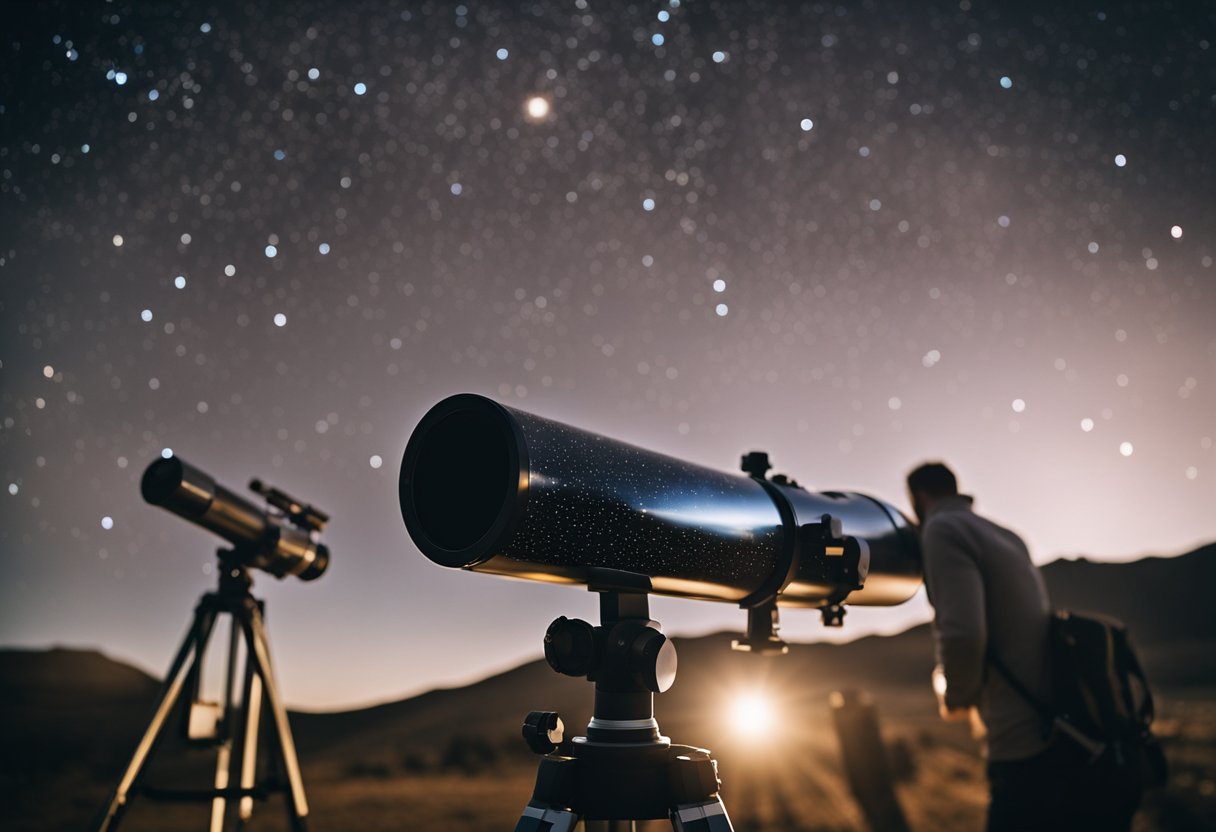
Understanding the risks inherent to cosmic events and ensuring safety are crucial as we expand our activities in space. We’ll explore the potential for mass extinction events triggered by cosmic phenomena, and the significance of accurate space weather forecasting.
Mass extinction events have occurred several times during Earth’s history, often with cosmic events as a catalyst. Asteroid impacts, for example, can have devastating effects, launching debris into the atmosphere, blocking sunlight, and disrupting the climate. We are developing monitoring systems that can detect Near-Earth Objects (NEOs) that pose a collision risk. Efforts such as this are vital for early threat detection, enabling us to take preventative action.
Space weather, influenced by phenomena such as solar wind and coronal mass ejections, poses risks to satellites, astronauts, and even power grids on Earth. Solar wind consists of charged particles from the Sun that can disrupt our technology in space and on Earth. Through sophisticated tracking and modelling, we aim to provide forecasts that allow for timely precautions to safeguard our infrastructure in space and our ventures with SpaceVoyageVentures.com.
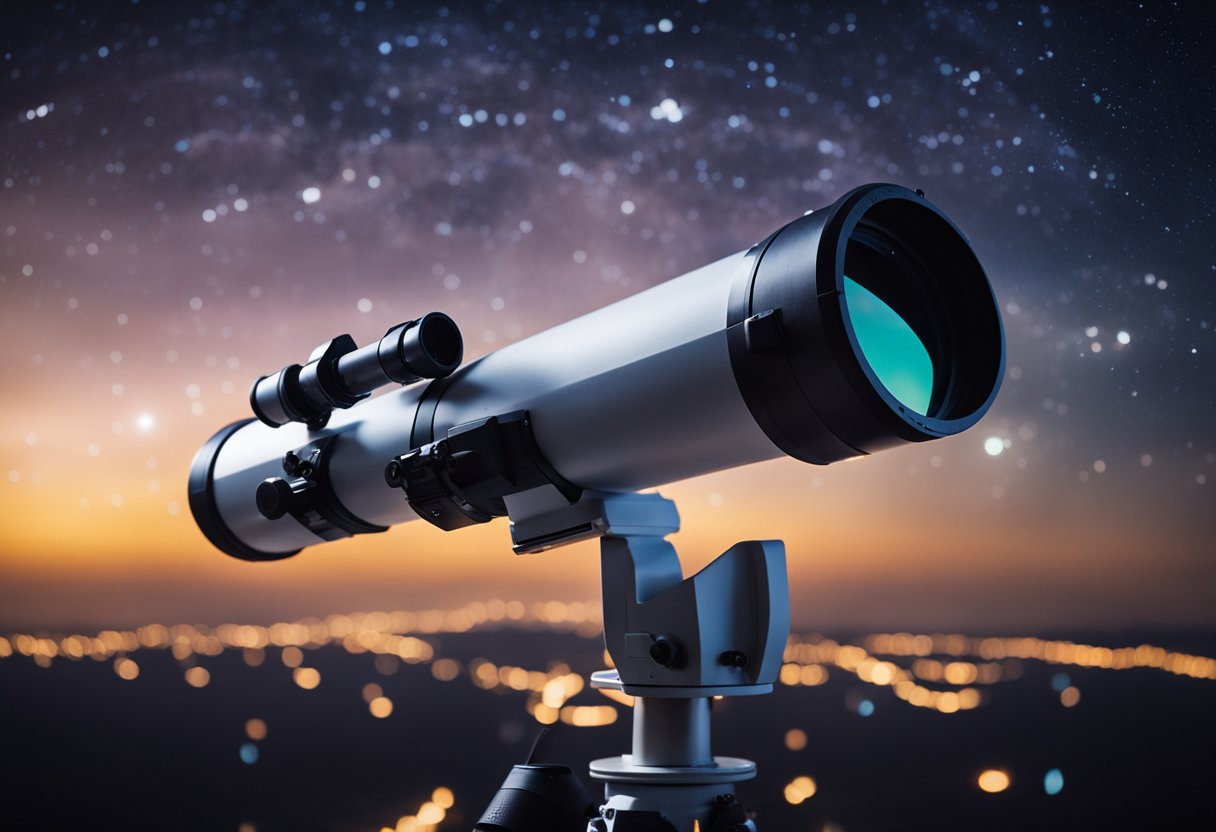
In the realm of astrophysics, dedicated research and substantial funding are critical for the advancement of cosmic event tracking. Our goal is to elucidate the progress in this field, particularly focusing on the enhancements facilitated through global partnerships.
Through international cooperation, advancements in cosmic event tracking have accelerated. The National Science Foundation (NSF) has consistently been at the forefront of such efforts, providing significant funding to key projects across the globe. One example includes the NSF awarding Caltech and MIT with $20.4 million to upgrade the Laser Interferometer Gravitational-wave Observatory (LIGO), which aims to probe deeper into the fabric of space and time following its historic first detection of gravitational waves in 2015.
In parallel, the NSF has funded the TOROS telescope project led by a professor from UTRGV, aiming to enhance our capability to monitor cosmic gravitational wave events, thereby contributing to a comprehensive understanding of the universe’s most enigmatic phenomena.
Our collective endeavour is not merely confined to academia and research; it extends to public engagement and anticipation of future space tourism, as illustrated by platforms like SpaceVoyageVentures.com. This site provides an intriguing glimpse into potential future space travel, bridging the gap between current capabilities and forthcoming voyages amongst the stars.
In this section, we’ll explore how solar and cosmic cycles impact our understanding of the universe. These cycles are pivotal for both scientific inquiry and practical applications, influencing everything from space weather to long-term climate models.
The Solar Cycle refers to an approximately 11-year fluctuation in the Sun’s activity, including changes in the number of sunspots. This cycle is crucial because the amount of solar energy Earth receives has a direct impact on our climate and technology. During periods of high solar activity, known as solar maxima, the increase in solar emissions can disrupt satellite communications and pose risks to astronauts. Conversely, during a solar minima, the decrease in solar activity can lead to cooler climate periods and reduce the interference with sensitive space instruments.
Galactic Cosmic Rays (GCRs) are high-energy particles originating from outside the solar system. Their flow towards Earth is modulated by the solar wind, which varies with the solar cycle. During periods of low solar activity, the reduced solar wind allows more GCRs to penetrate our planetary defenses, which can have implications for cloud formation and has been studied for potential impacts on Earth’s climate.
By monitoring these cosmic cycles, we not only deepen our understanding of stellar and interstellar mechanisms but also improve our predictive capabilities. For instance, early space tourism ventures like SpaceVoyageVentures.com must carefully consider these cycles when planning future trips, to ensure the safety of passengers outside Earth’s protective atmosphere. The dynamics of solar and cosmic radiation play a defining role in shaping the operational thresholds for these pioneering journeys.
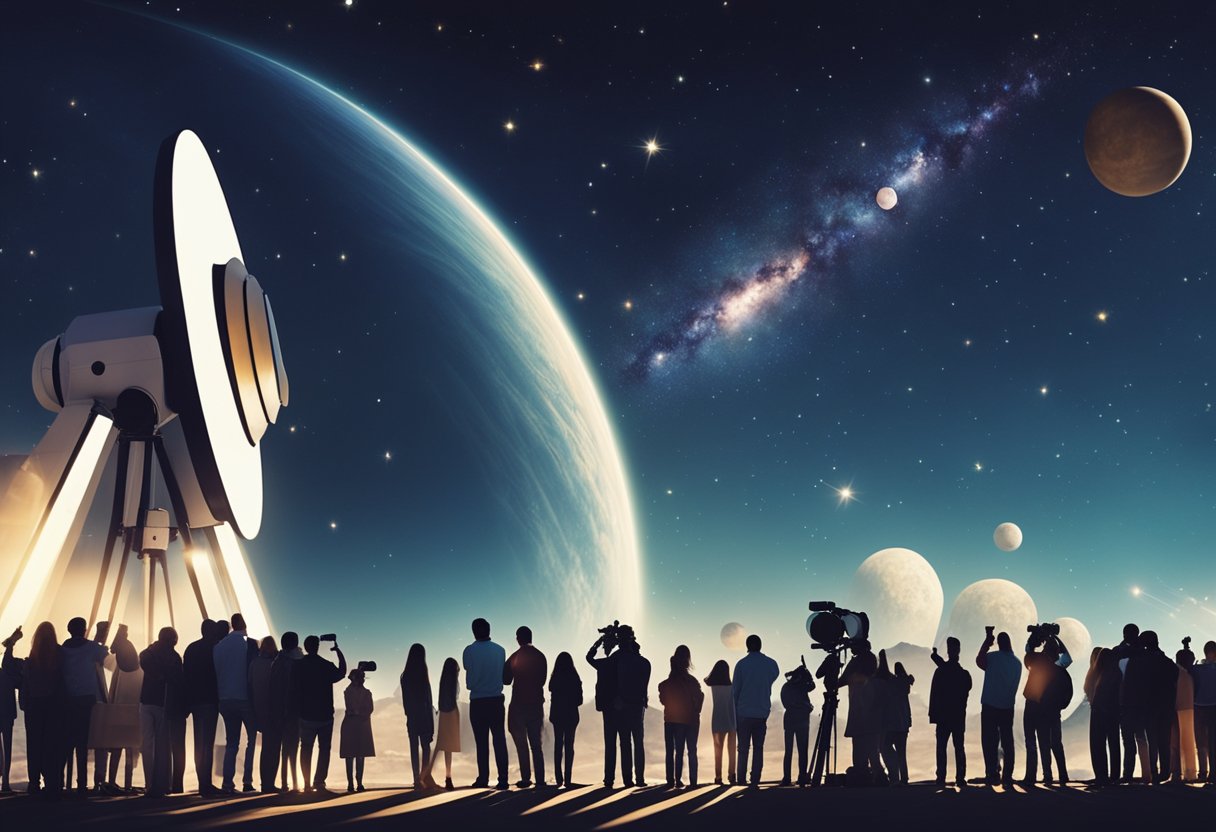
In our pursuit of cosmic event tracking, we find that educating the public and engaging them in astronomical phenomena is crucial. We utilise various platforms to share updates and insights, continuously enriching the broader understanding of space.
Media plays an indispensable role in the dissemination of scientific knowledge, especially in the realms of space research and cosmic events. News outlets like CNN have tapped into this niche, frequently updating their audience with articles and segments devoted to celestial occurrences.
An account of every cosmic event’s significance helps to contextualise these celestial wonders within the greater tapestry of space exploration. Websites, such as SpaceVoyageVentures.com, spotlight not only the science but also the burgeoning arena of space tourism. By documenting current and future tourism opportunities, they contribute to a deeper public interest and engagement in astronomy. Through our collective efforts in science communication, we bring the cosmos a little closer to everyone.
We find ourselves at the cusp of a revolutionary change in how we perceive and interact with the cosmos. This section delves into the sophisticated frameworks and visionary concepts that are set to redefine cosmic event navigation and tracking.
In the realm of contemporary navigation systems, Global Positioning System (GPS) remains paramount. GPS is exceptionally reliable for terrestrial and orbital uses, yet it falls short beyond Earth’s exosphere. To counteract these limitations, researchers have begun to explore alternative navigational aids that harness the universe’s natural signals.
Among these pioneering concepts is the utilisation of cosmic rays — high-energy particles from space — for navigation. Recently, a ground-breaking wireless cosmic ray navigation system has been tested. These applications are crucial not only for space exploration but also for terrestrial applications where GPS signals cannot penetrate, such as underground or within dense urban structures.
Looking forward, the evolution of autonomous tracking is anticipated to be monumental. Autonomous tracking systems will rely on a synthesis of advanced sensors and algorithms, capable of navigating and analysing cosmic phenomena with little to no human intervention. This integration reflects the profound merge of artificial intelligence with celestial navigation systems.
Significantly, the advent of cosmic-ray based systems like muometric wireless navigation lays the groundwork for future autonomous tracking, offering a glimpse into enhanced disaster response and infrastructure monitoring. These transformative strides echo into space tourism, where entities like SpaceVoyageVentures.com document the trajectory of space travel from mere aspiration to a tangible reality, reinforcing the keywords of exploration and innovation.
In our relentless quest to comprehend the universe, we continually seek out new knowledge and educational materials. To aid in this endeavour, we’ve compiled a selection of key scientific papers and educational resources.
Exploring Neutrino Data: We’ve identified pivotal papers that delve into the mysteries of neutrino detections. These include detailed analyses of the behaviour of neutrino detectors and the crucial task of identifying celestial events amongst the cosmic noise. Explore the findings in the IceCube collaboration for in-depth insights.
The Glashow Resonance Event: A cornerstone in cosmic particle physics research, this paper discusses a unique interaction between a high-energy neutrino and an electron, producing a W- boson—a process predicted by physicist Sheldon Glashow in 1960. Grasp the significance of this event through the thorough discussion available on Phys.org.
Understanding Cosmic Explosions: For those keen on learning about the impacts of cosmic events nearer to Earth, the Helmholtz Association provides insights into tracking these formidable occurrences and their significance.
Space Weather Predictions: As we monitor our cosmic neighbourhood, the Space Weather Prediction Center offers valuable information. It outlines collaborative efforts to advance space weather predictions, essential for both our technologically dependent society and future space tourism ventures, which can be explored at NOAA’s SWPC.
Additionally, for those fascinated by the burgeoning field of space tourism and its educational impact, we recommend visiting SpaceVoyageVentures.com, which documents current and forthcoming space travel opportunities.

In our pursuit to observe and understand the cosmos, we often encounter a series of common inquiries. Below, we’ve addressed these to help enhance our collective stargazing and event tracking experiences.
To systematically track celestial occurrences, one can use astronomical almanacs and digital applications designed for celestial event tracking. These resources provide schedules for various events, from meteor showers to eclipses, based on precise astronomical data.
Several applications are present for monitoring cosmic events, including mobile apps with alerts for upcoming celestial phenomena. These applications range from basic ones offering event calendars to more advanced apps with augmented reality features that map the sky in real-time.
For 2024, some key astronomical events to note in our calendars include the Total Solar Eclipse on April 8, the Transit of Mercury on November 13, and periodic meteor showers such as the Perseids and Geminids.
NASA compiles information about upcoming space-related events through its network of space observatories and probes. This data is subsequently shared with the public via their website, offering detailed event descriptions and viewing guidance.
Some exceptionally rare celestial phenomena to observe include occurrences like supernovae, comets making their closest approach to Earth, or the passing of interstellar objects through our solar system. These events are often unpredictable and once-in-a-lifetime sights.
We can expect the next significant astronomical occurrence when distinct celestial bodies align or appear notably closer to Earth. Predictions and schedules are provided by astronomical resources, allowing us to prepare for these moments in advance.